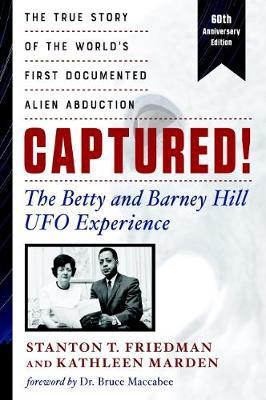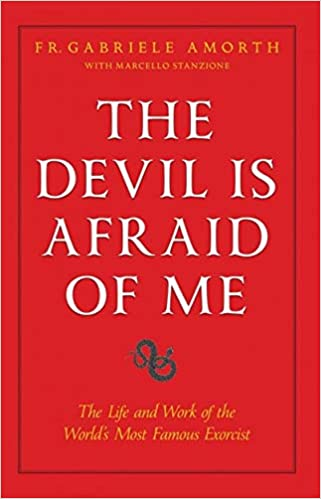Duncannon Fort: A Fortress of Fear and Folklore
Ghost/Paranormal
Tuesday 29th, April 2025
5 minute read.
Duncannon Fort, situated in County Wexford, Ireland, is a historical site steeped in centuries of military and maritime significance. While its military history dates back to the 16th century, the fort is perhaps just as renowned for its eerie and spectral reputation. Local legends and modern accounts alike tell stories of ghostly apparitions that continue to haunt its walls and grounds.
The fort, originally built by the British in the 1580s to protect the strategic waterway of the River Barrow, has served many functions over the years, from a garrison during various wars to a coastal defence post. After its military use ended in the 20th century, the fort was abandoned for a time, yet its haunting legacy has remained ever-present in local folklore.
Visitors and staff at the fort have reported numerous unsettling experiences over the years, leading many to believe that the spirits of former soldiers and civilians who once lived and died there have not quite left. The most commonly cited apparition is that of a British soldier from the 18th century, said to walk the ramparts, eternally guarding the fort.
"I’ve been here on a number of occasions at night, and sometimes you can feel a distinct chill in the air, even on warm summer nights," says local historian Fiona O'Connor. "It’s as if something is watching you from the shadows. Some people claim to have seen a figure walking along the parapet, with the unmistakable sound of boots echoing on the stone."
Another popular tale tells of the "Lady in White," who reportedly appears near the gatehouse. Some say she is the ghost of a woman who tragically lost her life at the fort, while others believe she may be a woman whose lover was lost at sea. Her figure is said to drift silently through the fort's corridors, and on occasion, visitors have described hearing faint whispers when walking past the gatehouse.
However, it is not only sightings of figures that add to the fort's eerie reputation. Some individuals have reported feeling a cold presence or hearing inexplicable noises, such as disembodied footsteps or chains dragging across the floor. These encounters are said to be particularly prevalent in the older sections of the fort, which are rarely open to the public and remain largely untouched by time.
In recent years, the paranormal groups have conducted a number of investigations at Duncannon Fort, seeking to uncover the truth behind the fort’s ghostly phenomena. Their findings, though inconclusive, have added fuel to the local mythos surrounding the site. "We’ve captured some odd readings on our equipment, and there are definite areas where the energy feels different," says Mr. Murphy, the lead investigator for one of these groups. "Whether that means there are ghosts at Duncannon, I can’t say for sure. But there’s certainly something unsettling about the place."
During one investigation, a team experienced a sudden drop in temperature in one of the fort’s older rooms, as well as unexplained movement of objects that could not be accounted for. "We were in a room near the old storage cells when we all heard what sounded like a door creaking open, but there was nothing there," Murphy recalls. "It was one of the strangest things I've experienced."
While many of the stories surrounding Duncannon Fort have taken on a ghostly narrative over time, they are also rooted in the very real history of death and tragedy that the site has witnessed. Over the centuries, the fort has been the scene of numerous battles and skirmishes. During the Cromwellian conquest of Ireland in the 17th century, the fort saw heavy fighting and was the site of many deaths.
One of the most tragic chapters in the fort’s history occurred during the 19th century, when a series of accidents took place on the fort’s docks. Many soldiers were killed in a sudden explosion, and it is said that the spirits of these fallen men still linger in the area.
Additionally, during the fort’s time as a prison, several inmates are believed to have perished in harsh conditions. Local records suggest that their final moments were full of suffering, and some accounts claim that their restless spirits still roam the site.
Today, Duncannon Fort remains a popular tourist destination, attracting visitors not only for its historical significance but also for its ghostly tales. The fort offers occasional ghost tours, where visitors can hear about the chilling stories and learn about the paranormal investigations that have been conducted there.
For many, the chance to explore the fort’s old walls and to possibly encounter a ghostly presence adds an extra layer of intrigue to their visit. "There’s something about the place," says regular visitor Mark O’Sullivan. "Whether you believe in ghosts or not, it’s hard to ignore the strange atmosphere. It’s part of its charm."
Duncannon Fort continues to stand as a monument to Ireland’s military and maritime past, but it also holds within it the stories of those who have lived, fought, and died within its walls. Whether one believes in the supernatural or not, the fort’s haunted reputation is a reflection of the many layers of history and human experience that it carries with it. It is a place where the past and present seem to blur, offering a glimpse into a bygone era — and perhaps, a glimpse into something beyond the mortal realm.
With its enduring ghostly legends, Duncannon Fort remains a testament to the belief that some places, no matter how much time passes, can never quite shake off the spirits of their past.
The fort, originally built by the British in the 1580s to protect the strategic waterway of the River Barrow, has served many functions over the years, from a garrison during various wars to a coastal defence post. After its military use ended in the 20th century, the fort was abandoned for a time, yet its haunting legacy has remained ever-present in local folklore.
Visitors and staff at the fort have reported numerous unsettling experiences over the years, leading many to believe that the spirits of former soldiers and civilians who once lived and died there have not quite left. The most commonly cited apparition is that of a British soldier from the 18th century, said to walk the ramparts, eternally guarding the fort.
"I’ve been here on a number of occasions at night, and sometimes you can feel a distinct chill in the air, even on warm summer nights," says local historian Fiona O'Connor. "It’s as if something is watching you from the shadows. Some people claim to have seen a figure walking along the parapet, with the unmistakable sound of boots echoing on the stone."
Another popular tale tells of the "Lady in White," who reportedly appears near the gatehouse. Some say she is the ghost of a woman who tragically lost her life at the fort, while others believe she may be a woman whose lover was lost at sea. Her figure is said to drift silently through the fort's corridors, and on occasion, visitors have described hearing faint whispers when walking past the gatehouse.
However, it is not only sightings of figures that add to the fort's eerie reputation. Some individuals have reported feeling a cold presence or hearing inexplicable noises, such as disembodied footsteps or chains dragging across the floor. These encounters are said to be particularly prevalent in the older sections of the fort, which are rarely open to the public and remain largely untouched by time.
In recent years, the paranormal groups have conducted a number of investigations at Duncannon Fort, seeking to uncover the truth behind the fort’s ghostly phenomena. Their findings, though inconclusive, have added fuel to the local mythos surrounding the site. "We’ve captured some odd readings on our equipment, and there are definite areas where the energy feels different," says Mr. Murphy, the lead investigator for one of these groups. "Whether that means there are ghosts at Duncannon, I can’t say for sure. But there’s certainly something unsettling about the place."
During one investigation, a team experienced a sudden drop in temperature in one of the fort’s older rooms, as well as unexplained movement of objects that could not be accounted for. "We were in a room near the old storage cells when we all heard what sounded like a door creaking open, but there was nothing there," Murphy recalls. "It was one of the strangest things I've experienced."
While many of the stories surrounding Duncannon Fort have taken on a ghostly narrative over time, they are also rooted in the very real history of death and tragedy that the site has witnessed. Over the centuries, the fort has been the scene of numerous battles and skirmishes. During the Cromwellian conquest of Ireland in the 17th century, the fort saw heavy fighting and was the site of many deaths.
One of the most tragic chapters in the fort’s history occurred during the 19th century, when a series of accidents took place on the fort’s docks. Many soldiers were killed in a sudden explosion, and it is said that the spirits of these fallen men still linger in the area.
Additionally, during the fort’s time as a prison, several inmates are believed to have perished in harsh conditions. Local records suggest that their final moments were full of suffering, and some accounts claim that their restless spirits still roam the site.
Today, Duncannon Fort remains a popular tourist destination, attracting visitors not only for its historical significance but also for its ghostly tales. The fort offers occasional ghost tours, where visitors can hear about the chilling stories and learn about the paranormal investigations that have been conducted there.
For many, the chance to explore the fort’s old walls and to possibly encounter a ghostly presence adds an extra layer of intrigue to their visit. "There’s something about the place," says regular visitor Mark O’Sullivan. "Whether you believe in ghosts or not, it’s hard to ignore the strange atmosphere. It’s part of its charm."
Duncannon Fort continues to stand as a monument to Ireland’s military and maritime past, but it also holds within it the stories of those who have lived, fought, and died within its walls. Whether one believes in the supernatural or not, the fort’s haunted reputation is a reflection of the many layers of history and human experience that it carries with it. It is a place where the past and present seem to blur, offering a glimpse into a bygone era — and perhaps, a glimpse into something beyond the mortal realm.
With its enduring ghostly legends, Duncannon Fort remains a testament to the belief that some places, no matter how much time passes, can never quite shake off the spirits of their past.



